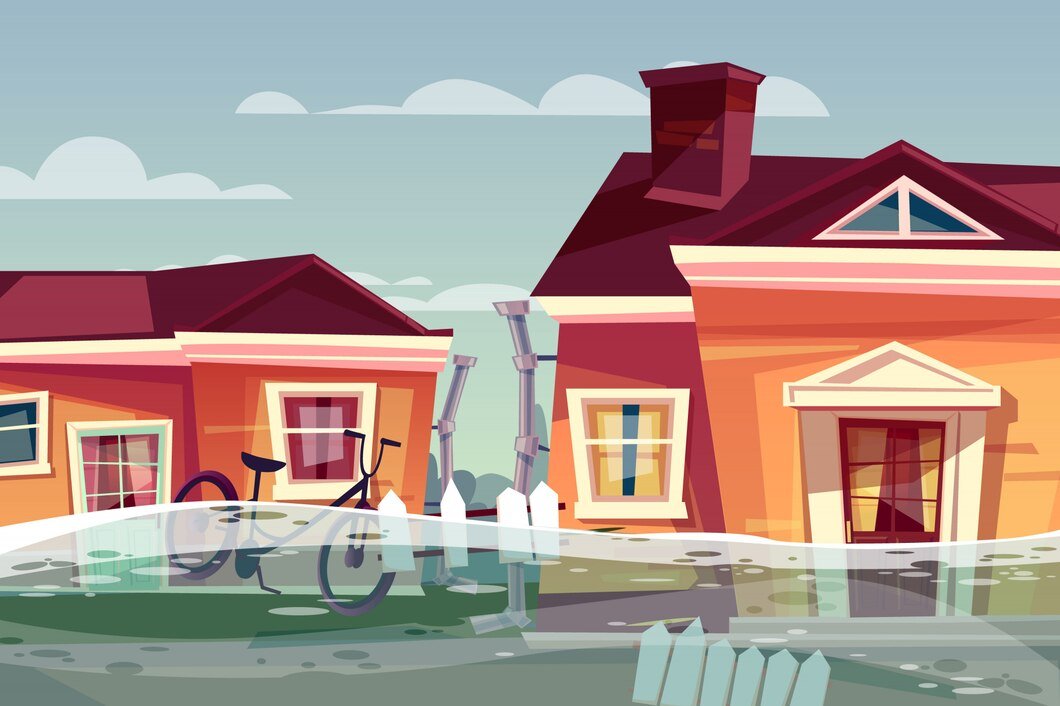What You Need to Know About Flood Insurance
Viajespasion.com– What You Need to Know About Flood Insurance. Flooding can do a lot of damage to your home, which can cost you a lot of money. However, a lot of people don’t know that regular home insurance doesn’t cover damage from floods. That’s why flood insurance is important. Let’s talk about what flood insurance is, why it’s important, and what you should think about before buying a policy.
Understanding Flood Insurance
Flood insurance is a special kind of insurance that protects your home from damage caused by flooding. It usually covers the structure of your house as well as the things that are inside it, helping you pay to fix or replace things that are broken.
What Flood Insurance Covers
- Building Property Coverage: This part of the policy covers the physical structure of your home, including electrical and plumbing systems, furnaces, water heaters, and built-in appliances.
- Personal Property Coverage: This covers personal belongings such as furniture, clothing, electronics, and other valuable items inside your home.
Why Flood Insurance is Essential
Floods can happen anywhere, and most of the time, you won’t even know it. Having flood insurance can give you peace of mind and protect your finances, no matter where you live and how likely it is to flood.
Key Reasons to Have Flood Insurance
- Natural Disasters: Floods can result from hurricanes, heavy rains, snowmelt, or even broken dams and levees. These events are unpredictable, making flood insurance a wise investment.
- Financial Protection: Repairing flood damage can be incredibly costly. Without insurance, you might face tens of thousands of dollars in repair and replacement costs.
- Mortgage Requirements: If you live in a high-risk flood zone, your mortgage lender may require you to have flood insurance.
Determining Your Risk Level
It’s important to know how likely it is that you will flood before you decide to buy flood insurance. The Federal Emergency Management Agency (FEMA) makes flood maps that show where the chance of flooding is highest and lowest.
How to Assess Your Risk
- FEMA Flood Maps: These maps categorize areas into different flood zones based on the likelihood of flooding. High-risk zones are labeled as Special Flood Hazard Areas (SFHAs), while moderate- to low-risk zones have less frequent flooding.
- Local Factors: Consider local factors such as proximity to bodies of water, historical flood data, and regional weather patterns.
Purchasing Flood Insurance
It’s important to know the policy details, coverage limits, and prices of flood insurance before you buy it. The National Flood protection Programme (NFIP) and private insurers are the main ways to get flood protection.
Steps to Buy Flood Insurance
- Evaluate Coverage Needs: Determine how much coverage you need for both your home and its contents. Keep in mind the value of your property and personal belongings.
- Compare Providers: While the NFIP is the primary provider of flood insurance, some private insurers offer additional options. Compare policies and prices to find the best fit for your needs.
- Understand Waiting Periods: Most flood insurance policies have a 30-day waiting period before coverage takes effect. Plan ahead and purchase insurance well before the flood season.
Cost of Flood Insurance
Several things affect how much flood insurance costs, such as where you live, how much coverage you need, and how risky your home is.
Factors Influencing Cost
- Location: Homes in high-risk flood zones generally have higher premiums than those in lower-risk areas.
- Coverage Amount: Higher coverage limits result in higher premiums. Be sure to choose coverage that adequately protects your property without overpaying.
- Deductibles: Higher deductibles can lower your premium but increase your out-of-pocket costs in the event of a flood.
Making a Claim
If your home is damaged by flooding, filing a claim quickly and correctly can help you get the money you need to start fixing things up.
Claim Filing Process
- Document the Damage: Take photos and videos of the damage to provide evidence for your claim.
- Contact Your Insurer: Notify your insurance company as soon as possible to start the claims process.
- Meet with Adjusters: An insurance adjuster will assess the damage and estimate the repair costs.
- Receive Payment: Once your claim is approved, you will receive payment to cover the repair or replacement costs as outlined in your policy.
Conclusion
Getting flood insurance is one of the best ways to protect your home from the unpredictable and often damaging effects of flooding. You can make sure you are ready for any flood-related situations by knowing your risk, getting the right coverage, and knowing how to file a claim. Taking these steps will give you peace of mind and financial security because you will know that your home and things are safe.

